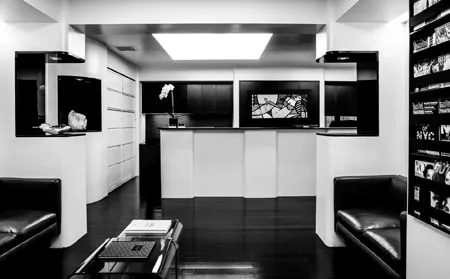Aging, excessive weight loss and pregnancy can cause the breasts to sag and lose shape and volume. Breast lift surgery, also known as mastopexy, can provide the solution. This cosmetic surgical procedure reshapes and lifts sagging breasts, restoring a more youthful contour. However, one question many women considering the procedure ask is: does a breast lift increase the risk of breast cancer?
Table of Contents

Breast Lift Surgery and Cancer Concerns Explained
A lift raises the breasts to a more aesthetically pleasing position by removing excess skin and repositioning the surrounding tissue and nipples to create a perkier, more symmetrical breast profile. Unlike breast augmentation, mastopexy does not use implants but aims to restore a firmer breast contour. The procedure can address:
- Sagging caused by pregnancy, weight loss, or aging
- Stretched skin with enlarged areolas
- Lack of firmness due to lost volume
A lift involves making small incisions to remove excess skin, tissue, and fat. The remaining tissue will be reshaped to support the new breast shape. Based on the patient’s specific aesthetic goals, mastopexy can be combined with augmentation or reduction surgery.
Many people worry about cancer risk after breast surgery and think a lift might increase risk of breast cancer. The reasons why this concern arises are:
- The perception that surgery could activate abnormal cell changes.
- Potential effects on breast tissue and mammograms.
- Confusion between breast lifts and breast implants, as certain implants have been linked to very rare type of immune system cancer – BIA-ALCL (Breast Implant-Associated Anaplastic Large Cell Lymphoma).
Now coming to the question: does a breast lift increase cancer risk? Let’s take a look at the facts:
- There is no scientific evidence linking a breast lift and cancer. Unlike breast implant surgery which involves inserting silicone or saline devices to enhance breast size or fullness, a lift simply reshapes and elevates the natural breast tissue without adding any foreign material.
- A lift does not alter breast tissue in a way that would trigger cancer. Rare health concerns linked to implants-specifically, BIA-ALCL, do not apply to lifts.
Studies have shown that women who undergo cosmetic breast surgery—whether a lift, augmentation, or reduction—are not at an increased risk of developing breast cancer compared to women who do not have such procedures.
While a breast lift does not cause cancer, it is essential to understand how the procedure may intersect with existing considerations:
- Pre-existing Conditions and Genetic Risks: If you have a family history of breast cancer, discuss this with your surgeon before undergoing any breast surgery. These factors may impact your overall breast cancer risk, but they are not related to the procedure itself.
- Breast Lift Combined with Implants: When a lift is paired with implants to enhance breast size and shape, there is typically no risk of cancer when high-quality, FDA-approved implants are chosen. Reliable plastic surgeons use safe and tested implants, reducing any potential risks and promoting breast lift safety.
Ensure Cancer Screening Before and After the Breast Lift Procedure
While a lift does not cause cancer, maintaining breast health remains important. Women considering this procedure, you should follow routine cancer screening guidelines.
- Before Surgery: Your plastic surgeon may recommend a mammogram or breast ultrasound before your procedure, especially if you are over the age of 40 or have a family history of breast cancer. These screenings establish a baseline for future comparisons and ensure there are no underlying health issues that could complicate the surgery.
- After Surgery: Scar tissue in the breasts following a lift or other breast procedure may conceal tumors and early cancer symptoms. This may reduce the precision of mammograms. So, inform your radiologist about your breast lift or implants you may have. This information will help them adjust imaging techniques to provide accurate results during mammograms. Some scar tissue or changes in breast structure may appear on imaging, but these are normal and non-threatening post-surgical outcomes.
Summing up the key points:
- A Mastopexy does not alter the breast tissue in a way that increases cancer risk.
- The procedure involves removing skin, not breast glandular tissue.
- Many studies evaluating breast implants also observe no significant increase in breast cancer risk.
- Textured implants have been linked to BIA-ALCL, which is not breast cancer.
- If you’re only considering a lift and not an implant, there’s no evidence to suggest any link to cancer—including BIA-ALCL.
Improvements in surgical methods and medical technology will continue to improve outcomes and safety of cosmetic breast surgery. Restoring youthful, perky breasts can be accomplished safely and effectively with this procedure. If you’re considering breast lift surgery with or without implants, make sure to consult an experienced plastic surgeon in an AAAASF-accredited practice. In addition to safe, customized solutions, experts will guide you through breast lift recovery, helping you achieve the best outcomes.
Ready to restore your confidence and achieve a youthful look?
